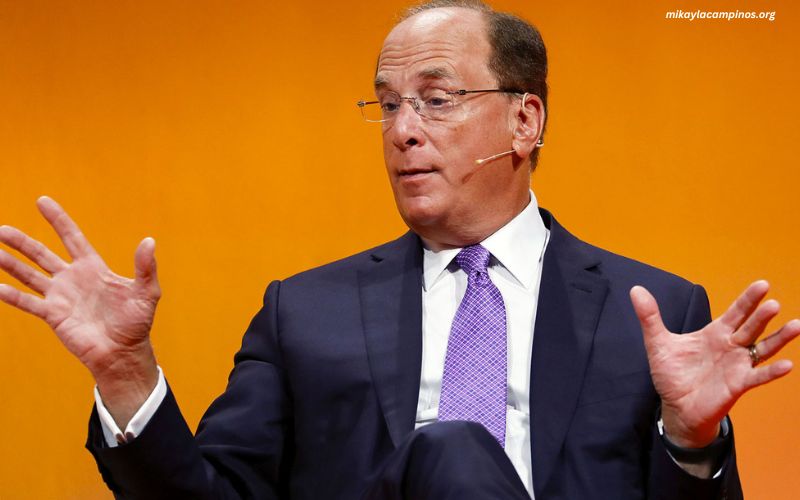The Current CEO: Larry Fink
As of now, Larry Fink is the Chairman and CEO of BlackRock. Fink co-founded BlackRock in 1988 and has been at its helm ever since, guiding the firm through decades of growth and transformation. His leadership has been pivotal in BlackRock’s rise to its current status, with the firm now managing assets worth over $9 trillion. Fink’s influence extends beyond BlackRock; he is a prominent voice in the financial world, known for his annual letters to CEOs, which often emphasize corporate responsibility and sustainable investing.
Fink’s tenure has raised questions about the appropriate retirement age for CEOs in major financial institutions. At 71, Fink continues to lead BlackRock, and there has been considerable speculation about when he might step down and who his successor might be.
Age and Executive Performance
The question of a CEO’s retirement age is not unique to BlackRock. It is a topic of debate across industries. Traditionally, many companies have adhered to a retirement age of 65 for their executives. This norm is based on the belief that leadership roles require significant energy, mental agility, and a fresh perspective, attributes that are presumed to decline with age. However, the increasing longevity and sustained performance of many senior executives challenge this assumption.
Studies show that experience and wisdom accumulated over years can be invaluable in strategic decision-making and crisis management. For instance, in the financial sector, where understanding market dynamics and regulatory environments is crucial, the deep knowledge and networks that come with years of experience can be a significant advantage.
Succession Planning at BlackRock
Succession planning is a critical aspect of corporate governance, particularly in firms as large and influential as BlackRock. The company has been known for its meticulous approach to leadership transitions. As Fink’s tenure extends beyond the traditional retirement age, BlackRock’s board and investors are keenly focused on ensuring a smooth transition when the time comes.
BlackRock’s leadership team includes several prominent figures who are often mentioned as potential successors. Rob Kapito, the President of BlackRock, is frequently cited as a leading candidate. Kapito has been with BlackRock since its inception and has played a crucial role in its development. His deep understanding of the firm’s operations and culture makes him a strong contender for the CEO role.
Another potential successor is Mark Wiedman, Head of International and of Corporate Strategy. Wiedman has been instrumental in expanding BlackRock’s global footprint and driving its strategic initiatives. His international experience and strategic acumen position him well for the top job.
The Broader Context: Age and Leadership in Financial Firms
The question of CEO retirement age at BlackRock cannot be fully understood without considering the broader context of leadership in financial firms. The financial industry has seen a trend of older CEOs staying in their roles longer. This trend reflects the value placed on experience and stability in a sector prone to volatility.
For instance, Warren Buffett, the legendary CEO of Berkshire Hathaway, continues to lead the conglomerate well into his 90s. Similarly, Jamie Dimon, the CEO of JPMorgan Chase, remains at the helm in his mid-60s, with no immediate plans for retirement. These examples underscore the industry’s acceptance, if not preference, for experienced leadership.
The Impact of Extended Tenure
The extended tenure of CEOs like Larry Fink has several implications for their firms. On the positive side, it provides continuity and stability, which are crucial for strategic planning and long-term investments. Investors and employees often have confidence in a proven leader with a track record of success.
However, extended tenures can also pose challenges. One potential downside is the risk of stagnation. Long-serving CEOs may become resistant to change or overly attached to their strategies, even when market conditions call for adaptation. This rigidity can hinder innovation and responsiveness, crucial factors in maintaining competitive advantage.
Moreover, prolonged leadership by the same individual can stifle the development of new leaders within the organization. Succession planning involves not just naming a successor but also preparing them for the role. This preparation is often best achieved through a gradual transition of responsibilities, which can be hampered by an extended tenure of the current CEO.
Shareholder Perspectives
Shareholders play a crucial role in shaping the policies around executive tenure and retirement. Institutional investors, in particular, have significant influence. BlackRock itself, as a major shareholder in numerous companies, advocates for robust corporate governance practices, including succession planning.
Shareholders generally favor stability but are also keenly aware of the risks associated with prolonged tenures. They look for assurances that the firm has a clear and effective plan for leadership transition. In the case of BlackRock, shareholders have expressed confidence in Fink’s leadership but also expect transparency and foresight in planning for his eventual retirement.
Regulatory Considerations
Regulatory frameworks also influence decisions about CEO retirement ages. In some countries, corporate governance codes recommend or mandate retirement ages for directors and executives. These regulations aim to ensure board refreshment and the infusion of new perspectives into corporate leadership.
In the United States, where BlackRock is headquartered, there is no federally mandated retirement age for executives. However, companies are expected to adhere to best practices in corporate governance, which include considerations of leadership succession and board composition.
The Future of Leadership at BlackRock
Looking ahead, the future leadership of BlackRock will likely be shaped by several factors, including market dynamics, regulatory changes, and the evolving expectations of investors and other stakeholders. Larry Fink’s eventual retirement will mark the end of an era for BlackRock, but the firm is well-positioned to navigate this transition.
BlackRock’s commitment to sustainability and responsible investing will likely continue to be a central theme under new leadership. The firm has been at the forefront of integrating environmental, social, and governance (ESG) considerations into its investment processes, a trend that is expected to grow in importance.
The new CEO will also need to address emerging challenges and opportunities in the financial industry. Technological advancements, such as artificial intelligence and blockchain, are transforming the sector. The next leader of BlackRock will need to harness these technologies to enhance operational efficiency and create new value for clients.
Moreover, the new CEO will have to navigate the complex regulatory landscape and geopolitical uncertainties. BlackRock’s global presence means that its leadership must be adept at managing risks and leveraging opportunities across diverse markets.
Conclusion
The retirement age of BlackRock’s CEO is a multifaceted issue that touches on broader themes of leadership, succession planning, and corporate governance. Larry Fink’s extended tenure reflects the value placed on experience and stability in the financial sector. However, it also underscores the importance of preparing for leadership transitions to ensure continuity and resilience.
As BlackRock looks to the future, the firm’s next CEO will inherit a legacy of excellence and a platform for continued growth. The careful planning and strategic foresight that have characterized BlackRock’s approach to leadership will be crucial in guiding the firm through its next phase of development. Whether through internal promotion or an external appointment, the transition will be a defining moment for BlackRock and its stakeholders, shaping the firm’s trajectory in the years to come.




кредит без отказа и поручителей [url=www.kredit-bez-otkaza-1.ru/]www.kredit-bez-otkaza-1.ru/[/url] .